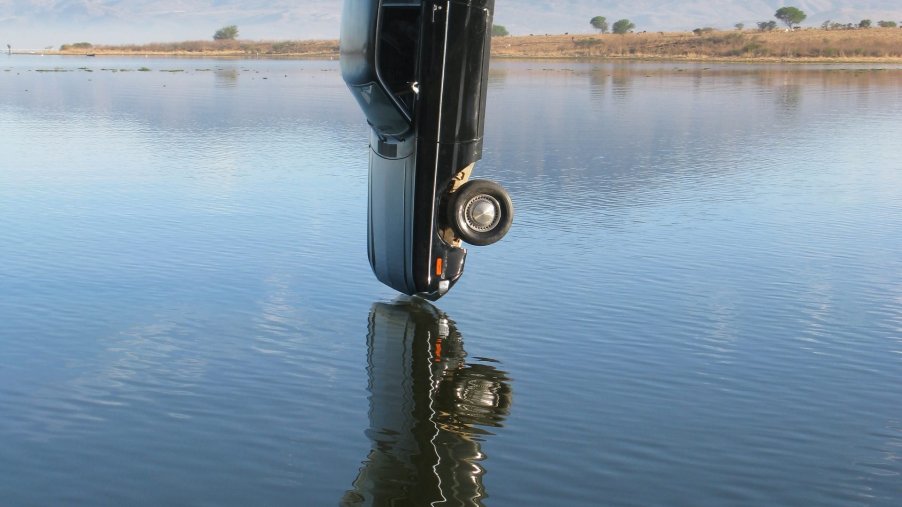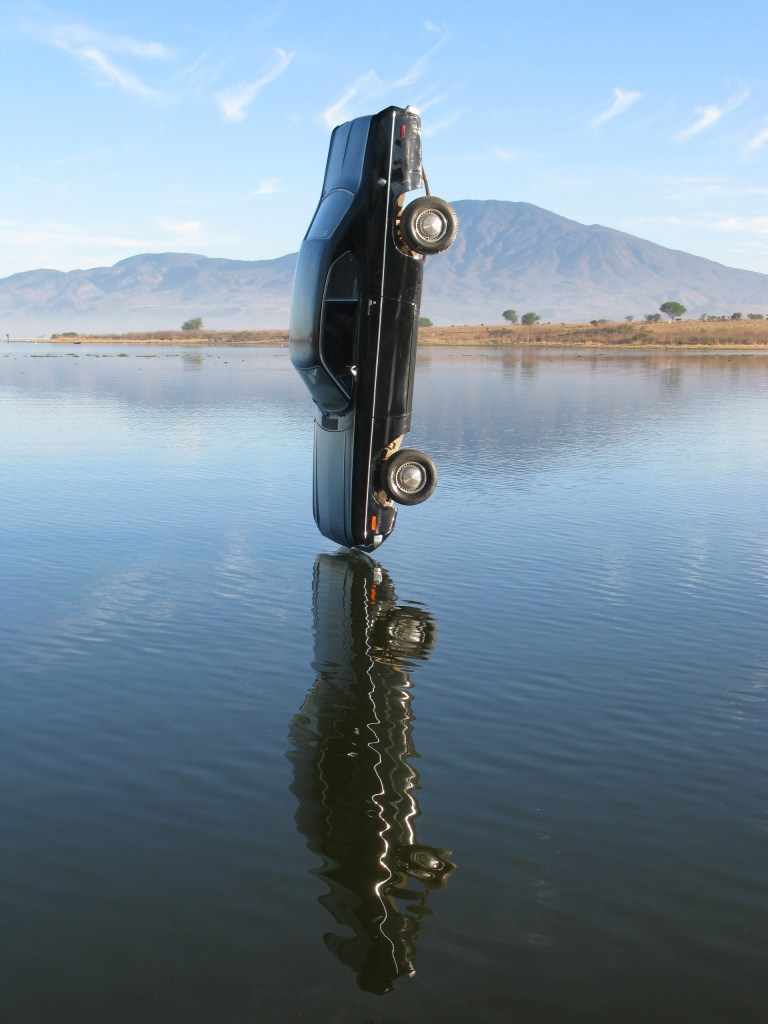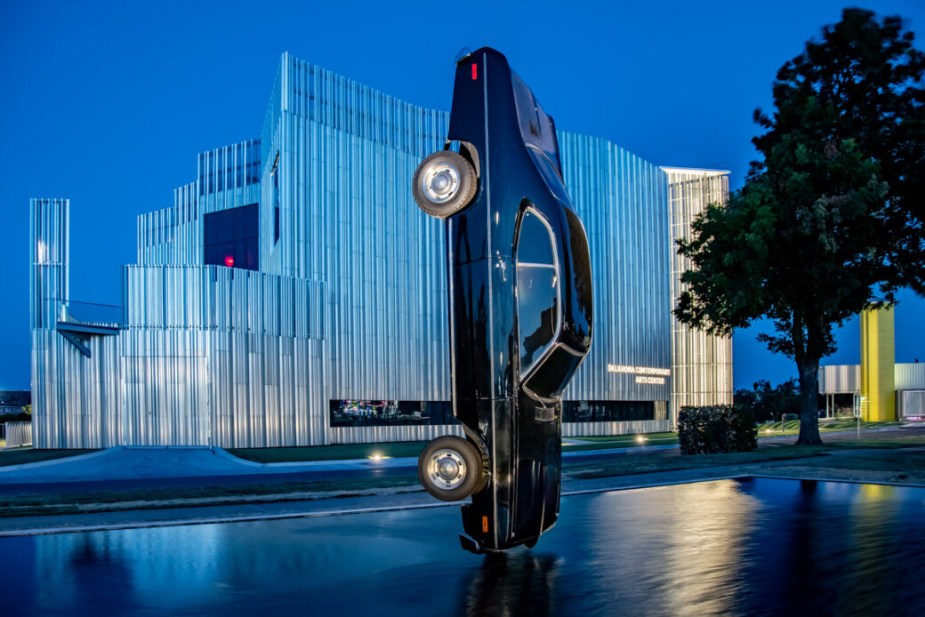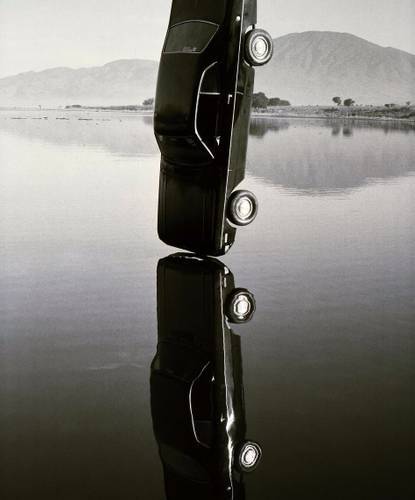
Why Is This Classic Plymouth Duster Hung Like This?
You’re not looking at a Photoshopped picture. This classic 1975 Plymouth Duster is being dangled by a crane for a reason. The 3,000 lb Duster is being placed on an armature, attached to the bumper. After the attachment, and the crane was removed, filling the reflecting pool with 2,500 gallons of water mixed with non-toxic black die was the next task. And it’s still there, reflecting face-down in a pool in Oklahoma City. It’s car art.
Is this car art?

This is art. Aren’t all cars art sculptures, in some way? It is Mexican artist Gonzalo Lebrija’s latest project. Just drive down N Broadway and there it is in front of the Oklahoma Contemporary at Campbell Art Park.
Lebrija calls it “Breve Historia del Tiempo,” kicking off the museum’s major exhibit of Mexican artwork. A brief time of history is one way to use a car as art to get passersby in cars to stop and look. “We do get a lot of walk-ups and drive-up traffic, and we’ll chalk that up as a win any time somebody stops and reverses course to see the art,” Steve Boyd, the Contemporary Art Center’s exhibitions manager told the Oklahoman.
How does car art like this happen?

“The first idea really came from a kind of dream that I had of a car falling down into a lake, and just stopping at the moment it touched the water,” said Lebrija. “Then this image just started to grow up in my mind until I did it.” Initially, this dream manifested into dropping another Duster into a lake just outside of Guadalajara.
For that one, he took high-speed pictures and got a shot of it just before hitting the water. “Once I had the print of the image, the print changed the image on my consciousness,” he said. It took over. In the image, you have this kind of vertigo sensation, you feel that the car really is giving you this idea of gravity force.”
Originally shown in Mexico City’s La Coleccíon Jumex, it had to be shipped to Oklahoma for this special event. “They sent us all the technical drawings, how everything worked, and we brought it via a fine arts shipper,” Boyd says. “There’s always a little bit of slowdown at the border, but we got everything.”
“Cars are the most important object of the 20th century”

“The automobile for my generation, and for many other generations, I think is the most important object of the 20th century,” says Lebrija. “With all the concepts and ideas that apply around the car, not only about moving but also about this sense of freeness.
“I think we are arriving at the end of an era now of the gasoline cars. The world is changing, transportation is changing, and they should change, of course. So, I think it’s a very melancholic work, in terms of that. Since it is a public artwork, though, Lebrija said people are free to interpret it as they wish.
“I have my concept around it, but it doesn’t matter my concept anymore once it becomes in the public domain. All these stories that people start to make out about it, they all have a certain value,” he said.



